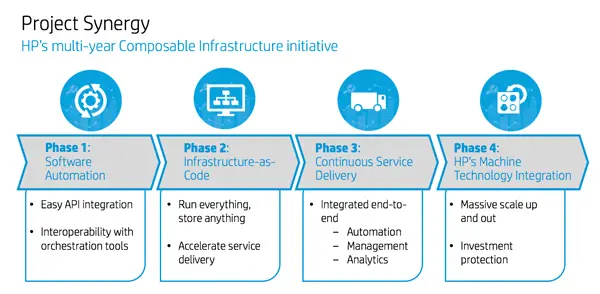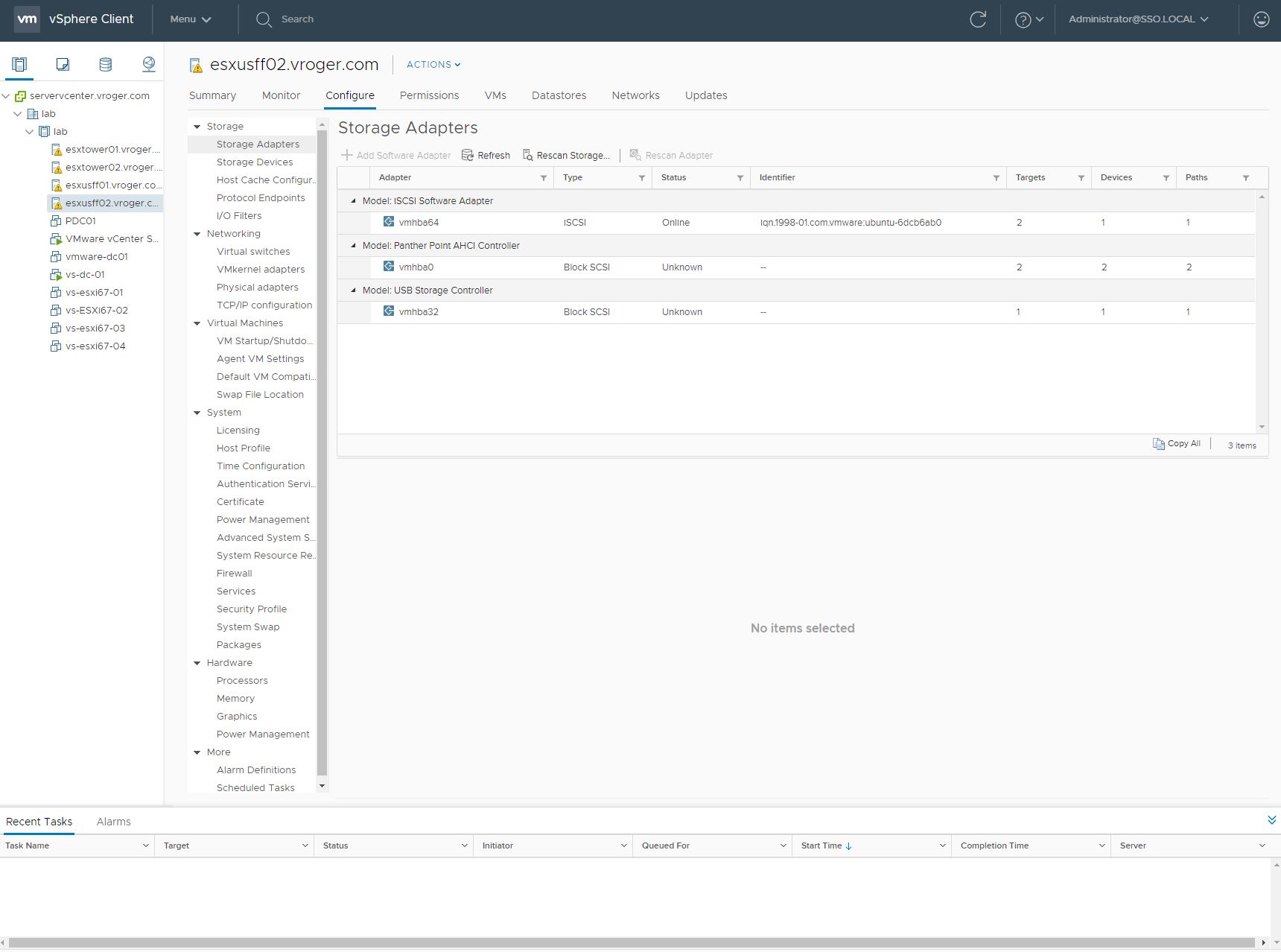The company that created the converged infrastructure concept with its blades is at it again. HP announced during HP Discover plans around a concept called Composable Infrastructure. Now, let me be the first to say, much of what makes up Composable Infrastructure today isn’t new to HP. But, the name is new for an overarching strategy for individual developments that have been building in the company for a while.
First, what is Composable Infrasturcture? It is the idea of being able to control physical and virtual pools of resources with software through a single, consistent API with full lifecycle support for deployment, management, self-healing and decomissioning.
 The idea is that through HP OneView and its available API’s, developers can define and call this API to compose, decompose or recompose the infrastructure into its desired specification. Big names within the developer community including OpenStack, Docker, Ansible, Puppet and Chef have all signed on to be a part of HP’s partner program around Composable Infrastructure.
The idea is that through HP OneView and its available API’s, developers can define and call this API to compose, decompose or recompose the infrastructure into its desired specification. Big names within the developer community including OpenStack, Docker, Ansible, Puppet and Chef have all signed on to be a part of HP’s partner program around Composable Infrastructure.
In addition to the API capabilities within OneView, HP also announced a new, multi-year strategy to move beyond software automation to fully automate the lifecycle of bi-modal infrastructure that can bridge companies between traditional IT and new cloud-native IT. HP calls this strategy Project Synergy.

For Project Synergy, the company plans to develop a full ecosystem which aims to allow for definition and instantiation on infrastructure – both physical and virtual – with integration into management and development platforms. It accelerates application and infrastructure orchestration for both traditional and cloud applications.
Not all new territory
When I say this isn’t a net new thing within HP, the first thing to look at is HP OneView. OneView 2.0 was announced during HP Discover and is the second major release of their infrastructure management product. During the life of version 1, OneView has consistently added new functionality in each point release. OneView has extended beyond blade servers and networking to include rack mount hardware and extended beyond servers to manage 3PAR storage, also, all during the version 1 release.
OneView brings the concept of a single management console to control and create servers, storage and networking. It is the cornerstone of the HP ConvergedSystems solutions – enabling a centralized management for these purpose built solutions. It has also become a monitoring and management platform for other HP infrastructure. HP realizes that all the goodness brought to ConvergedSystems by OneView can also be applied to larger pools of resources and this is where Composable Infrastructure comes in.
Another point in saying this isn’t new territory for HP is that RESTful API’s it has been working hard to develop in the HP ProLiant systems. HP is been working to create a RESTful API on the iLO4 management chips. Its another step in being able to take programatic definitions and instantiate those definitions on hardware. HP 3PAR has similiar capabilities through SSMC, which shares a similar DNA to OneView. And as a customer looking into HP, I fully expect (but have no confirmation) we will see similar interfaces develop in networking and for other storage platforms.
Bright Possibilities
Front and center in the Composable Infrastructure announcement is letting software call the shots. In the future, this allows orchestration tools to reach into a pool of raw compute, storage and network in hardware form and create the infrastructure it requires based on its definition. It would be very similar to the vision VMware has painted for cloud automation around the vSphere platform, only with physical hardware and lacking the VMware layers of software. For solutions like OpenStack and container technologies, this allows you to bypass the VMware vTax and work directly on hardware.
But the vision extends beyond providing a programatic way to provision and deprovision hardware. The vision is to integrate in a way that the full lifecycle is taken into account with automation, management and analytics to assist with the operation of the hardware for the entire life of the product it is supporting. HP wants to take its analytics and be able to make decisions and create self-healing infrastructure that is able to react to changes in the environment and continue to operate without manual intervention. Since all the definitions and all of the steps to create the hardware infrastructure are stored in software, the ability to recompose, as HP calls it, the infrastructure is viable in the future.
Again, the message sounds very similar to one the VMware has been talking about with vRealize products, but it is a vision that neither company has fully realized. Both, I’d argue, have significant assets in the areas needed, but neither one has an fully integrated, end-to-end solution at this time. The challenge is going to be how well these products integrate and how easily they can be deployed and configured for customers to realize the benefits of the vision. I think simplicity of management and configuration will be the key factor.
Bimodal infrastructure was another big buzzword with the HP folks during HP Discover and its the concept of having a single set of infrastructure serve your needs for both the traditional applications your enterprise needs along with the cloud applications that your enterprise should be investing in for the future, according to HP. The cloud native applications will allow the enterprise to be more agile, delivering innovation continually instead of in large, monolithic phases. Continual delivery will allow the organization to adjust incrementally as the environment changes in a way that is impossible with monolithic applications.
Vision always paints a picture of the perfect world and those practitioners who work in IT know that vision and reality often have a gap in between. The problem with orchestration and cloud automation packages to date have been the complexity required to configure and get these systems working. As this develops, my hope is that its done in a way that keeps things clean and simple so that customers can gain the most benefit. If HP OneView is a benchmark, there is hope that this can happen in HP.

